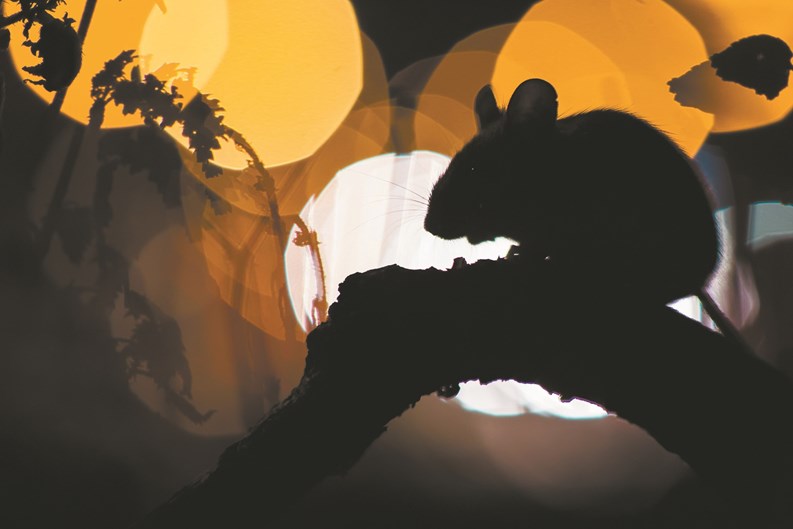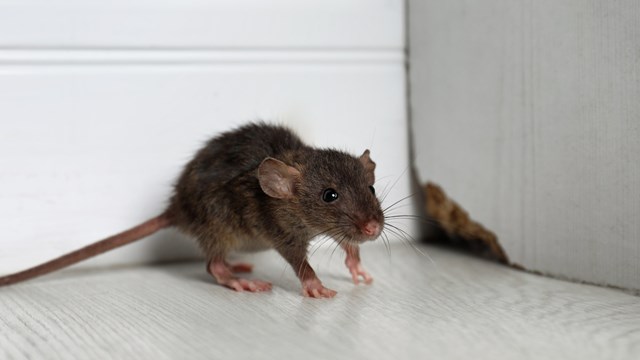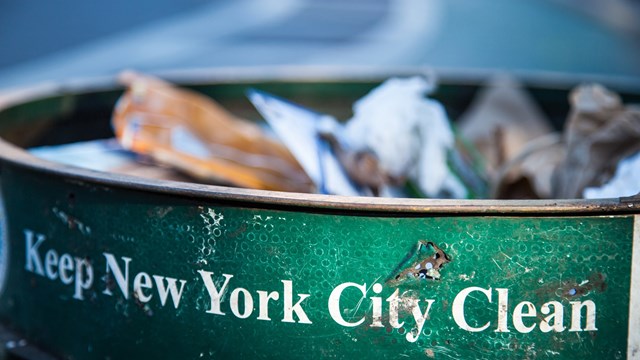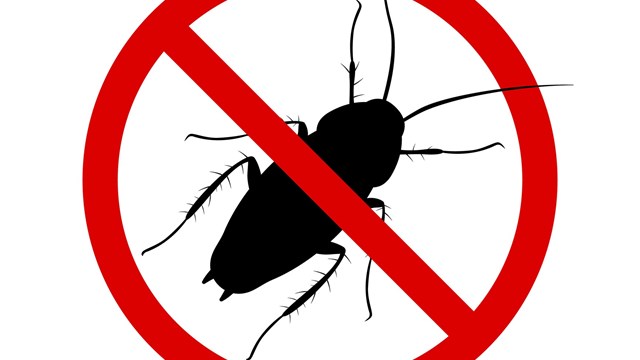Whether in a single-family home or an apartment building, pretty much every homeowner has had that moment: when in the middle of the night, he or she turned on the kitchen light to see a huge water bug scurrying across the counter, or heard the sound of tiny rodent feet scampering behind the wall. It’s a feeling that makes one want to jump, recoil, or shiver. In Brooklyn they have a word for it — skeeve — where you can literally feel your skin crawl.
Contrary to what most of us would like to believe, bugs, vermin, and other pests are rarely the result of uncleanliness — although that can be a factor. They are a fact of life, or rather a fact of human coexistence. They’re even directly responsible for the presence of certain furry companions in human homes. While dogs became domesticated as an assistant to man in hunting food, cats — certainly the preferred pet of many a city dweller — eliminated pests such as mice from human habitats. And so was born one of the great interspecies relationships.
Adept as they are at keeping many kinds of pests at bay, cats aren’t the final word. Today we have exterminators, along with a much better understanding of how to minimize (if not entirely eliminate) the presence of unwanted critters in our homes. But different seasons bring different types of pests, so knowing what to expect and when can give us higher mammals an edge in keeping our homes pest-free.
Seasonality
All pests are not the same. Different pests may become more common at certain times of year, primarily due to climatic conditions. Rodents, on the one hand, are warm-blooded animals. They don’t want to be out in the cold, so they seek shelter often in homes and buildings for the winter. Insects crave a consistent water source, so they will seek that source inside in both cold and hot conditions, but especially during dry periods.
Then there is the matter of nesting. Though birds evolved in natural environments that provide cover and a food source, not all birds live in forests or countryside. Any city dweller will easily recognize a pigeon. While that pigeon may live an urban lifestyle, it will still instinctively seek out environments for nesting that mirror its historical nesting environment, i.e., ledges, overhangs, and other nooks and crannies shielded from the elements. Rodents are similar; while the country mouse may burrow in a grassy field or forest, its citified cousin will seek out environments that mirror that field or forest in an urban landscape.
New York
Speaking of pigeons, many New Yorkers have a love-hate relationship with the hearty, ubiquitous birds. Though they are often seen as a symbol of the urban landscape and grudgingly admired for their ability to survive just about anything the city can throw at them, they’re alternately referred to by many as ‘rats with wings.’ Native to Europe, pigeons were introduced to North America in the early 1600s and, like their ancestors, seek out window ledges that mimic the rocky cliffs of their original habitats.
Dan Wollman, the CEO of New York City property management firm Gumley Haft, reports that he has encountered problems with pigeons at several properties in Manhattan. Those issues particularly occurred in the early autumn, which marks the beginning of their nesting season.
“We had a building with a large interior courtyard on the Upper West Side,” says Wollman, “and we had to place a net across the entire courtyard at the roof level. There are certain elements in the courtyard that attract roosting pigeons. One appears to be shade. In another building courtyard we had a sidewalk bridge in a tight space, and the pigeons started roosting under the ledges where the bridge stood. They tend to roost in the shaded parts of buildings. In that case, we used three rows of plastic spikes glued to the windowsills so they couldn’t land safely. That was non-harmful and non-toxic to the pigeons.”
Florida
Based in Pembroke Pines, Florida, Bob Michaelson of BBM Pest Control has been treating pest issues for over 15 years. He fights the same pests year round, but sees an increase in two types of insects in the early autumn: bees and palmetto bugs.
“Bees,” he says, “increase infestation activities that time of year due to rain.” He says he receives five to six calls a day that time of year for bees, while he might receive only two during the entire winter.
According to Michaelson, the bigger problem in the autumn is palmetto bugs, which are something of a euphemism: these are essentially giant cockroaches, never a pleasant thing to encounter. Michaelson explains that palmetto bugs come into homes lured by the promise of just the right amount of moisture. “Later in the autumn, when there is little rain, they are so deep in the ground that when it rains they have to come up or drown — so they tend to come into houses,” he says. “Older buildings are more prone to palmettos than newer ones, because of changes in plumbing technology.”
Michaelson says that palmettos are the hardest member of the cockroach family to fight, because when they drop an egg sac, they don’t tend to stick around. “They leave, they go somewhere else, and when we catch them we never know where they left the babies.” He has even seen them infest a car.
“The only way to control them is to seal up your property,” says Michaelson. “If you treat the home properly, you may still have openings in the roof, etc., which they can crawl through. So, it’s difficult to get rid of them permanently if the home isn’t airtight. Gaps or cracks are how they get in.”
New Jersey
New Jersey has its own set of particular pests, both unique and unsavory. One that gets particularly pesky in autumn are stink bugs. They are actually native to East Asia, and were introduced to the United States accidentally in or around 1998. They are called stink bugs because they give off an unpleasant odor when crushed.
“What stink bugs do in the autumn is overwinter,” says Sue Larson, Operations Manager for the Haskell-based Abarb Pest Services. “Overwintering means they nestle themselves into your windows and doors and emerge in the spring. To alleviate the problem, fall is the best time to have your doors and window frames treated to prevent this. The treatment is a dusting that goes around the window and door frames, and when the stink bugs come in contact with it, they die.”
Larson also mentions that advances in the development of treatments to fight ants have moved from repellents to attractants. There is now a gel product on the market that employs pheromones to attract the ants to it. The bugs contact the gel, then bring the poison in it back to the nest, killing off their little buddies.
Two major furry-footed pests that can become particularly problematic in New Jersey are mice and groundhogs. Larson has advice for dealing with those kinds of varmints. “Mice can become a major pest in the fall,” she says, “They are trying to escape the coming cold, and they can contract their bodies to the width of a dime — so you have to plug up every hole. Seal everything up.” She notes that they will also try to come inside during intensely hot days as well, so winter isn’t the only time it pays to have a properly-sealed house.
When it comes to groundhogs, Larson offers a unique, though old-fashioned, way of dealing with them. “There are usually three burrows,” she says, “one main entrance, and two egresses, so they can escape, if need be. When you find the burrows, smash up some glass and place the smashed glass in the burrow and pour a bottle of hot sauce on top, then drop dirt back into the hole and stamp it down. I’ve done it, and it works!”
Are Treatments Safe?
One big consideration overall in pest control is whether the chemicals used to repel or eliminate pests are safe for humans and pets. Truthfully, the door is still open on this subject, but much depends on the type of pest that’s being eradicated, the concerns of the resident, and the approach of the exterminator.
For his part, Wollman takes a broad view. “If you look at the chemicals used to control rodents,” he says, “the Department of Environmental Protection (DEP) has outlawed many which now can no longer be used — but that were effective. That’s led to a proliferation of rodents.” The question, he proposes, is whether one is willing to accept mice running around to avoid using possibly harsh chemical methods to fight them. He recommends a number of simple actions that can be undertaken to make your dwelling less attractive to rodents, including reducing access to your apartment by adding door sweeps on all doors, and eliminating drop ceilings if possible (The spaces between dropped ceilings and overhead joists have been known to harbor everything from mice to feral cats, and even the occasional raccoon).
Whatever the season — or your particular pest issue — the refrain from the pros remains largely the same: make your home and property less attractive to the pest critters in your region. Treat an infestation the moment it’s discovered, and you’ll be less likely to turn on that kitchen light at 2 in the morning and come face-to-feelers with an uninvited guest.
A J Sidransky is a staff writer for The Cooperator, and a published novelist.










Leave a Comment